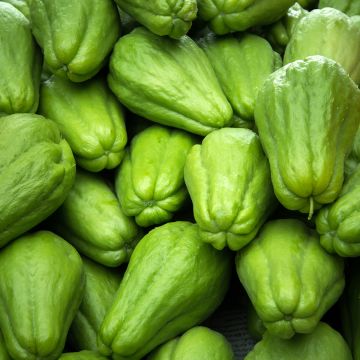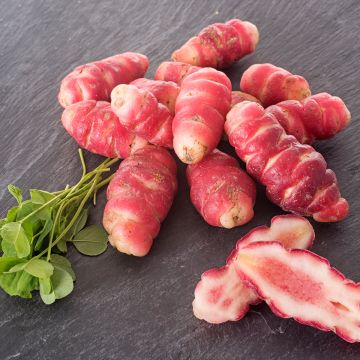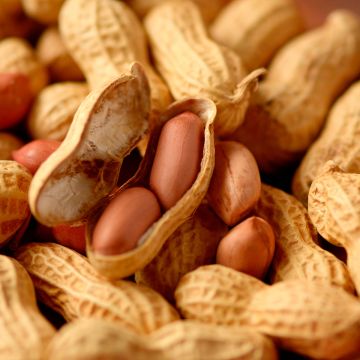

Crosnes (godet) - Crosne du Japon


Crosnes (godet) - Crosne du Japon
Stachys affinis
Stachys affinis
Chinese artichoke, Crosne, Japanese artichoke, Knotroot
Great as usual. Nothing to add
Quentin83, 04/10/2025
Special offer!
Receive a €20 voucher for any order over €90 (excluding delivery costs, credit notes, and plastic-free options)!
1- Add your favorite plants to your cart.
2- Once you have reached €90, confirm your order (you can even choose the delivery date!).
3- As soon as your order is shipped, you will receive an email containing your voucher code, valid for 3 months (90 days).
Your voucher is unique and can only be used once, for any order with a minimum value of €20, excluding delivery costs.
Can be combined with other current offers, non-divisible and non-refundable.
Why not try an alternative variety in stock?
View all →This plant carries a 6 months recovery warranty
More information
We guarantee the quality of our plants for a full growing cycle, and will replace at our expense any plant that fails to recover under normal climatic and planting conditions.
Description
The Crosne, sometimes called Japanese Crosne, is cultivated for its white, slightly swollen rhizomes. These tubers have a flavor similar to Jerusalem artichokes, salsify, and the heart of an artichoke. Planting in April-May and harvesting throughout the winter.
The crosne is a small, white tuber, slightly swollen. The harvest is not very abundant, but the subtle and delicate taste of the crosne encourages its cultivation in the vegetable garden. A traditional food in China and Japan, the crosne owes its name to a village in Essonne, where it was first cultivated in Europe at the end of the 19th century.
The crosne belongs to the Lamiaceae family, like mint, whose foliage is similar. The plant measures 30 to 50 cm (12 to 20in) in height. In terms of cooking, crosnes do not need to be peeled and just need to be brushed to remove excess soil. After cooking, their flavor is reminiscent of Jerusalem artichokes, salsify, and the heart of an artichoke. They can be consumed fried, sautéed, in gratins, or cold in salads.
Harvesting: Crosnes are harvested when the foliage has disappeared, as needed. Gently dig them up with a garden fork. Resistant to cold (except in regions with very harsh winters), crosnes can remain in the ground throughout the winter. You can thus space out the harvests from November to March.
Storage: Crosnes should be consumed quickly, within two days of harvesting. Leave them in the ground if you don't need them immediately.
Gardener's tip: We recommend mulching the soil with thin successive layers of grass clippings, if possible mixed with dead leaves. This protection, which helps keep the soil moist, also reduces weed growth. Additionally, a thick mulch will make harvesting easier during the winter period.
Report an error about the product description
Stachys affinis in pictures


Harvest
Plant habit
Foliage
Other Traditional, unusual, exotic vegetable tubers
View all →Planting and care
The crosne thrives in most types of soil, ideally rather rich and sandy. If your soil is heavy, add some sand at the time of planting, which takes place in April-May.
The plants will be spaced 40 cm (16in) apart in all directions. Loosen the soil. Dig a hole (3 times the volume of the root ball), place the root ball and cover with fine soil. Tamp lightly and water moderately. Mound up when the plants reach 20 cm (8in) in height, around the month of June.
Only surface cultivate as the crosne roots are shallow. Water especially in case of drought. Be sure to harvest all the tubers if you want to grow this plant as an annual. Indeed, as it is resistant to cold, it can sprout again the following spring from forgotten rhizomes in the soil and spread rapidly in the garden!
Cultivation
Care
Intended location
-
, onOrder confirmed
Reply from on Promesse de fleurs
Similar products
Haven't found what you were looking for?
Hardiness is the lowest winter temperature a plant can endure without suffering serious damage or even dying. However, hardiness is affected by location (a sheltered area, such as a patio), protection (winter cover) and soil type (hardiness is improved by well-drained soil).

Photo Sharing Terms & Conditions
In order to encourage gardeners to interact and share their experiences, Promesse de fleurs offers various media enabling content to be uploaded onto its Site - in particular via the ‘Photo sharing’ module.
The User agrees to refrain from:
- Posting any content that is illegal, prejudicial, insulting, racist, inciteful to hatred, revisionist, contrary to public decency, that infringes on privacy or on the privacy rights of third parties, in particular the publicity rights of persons and goods, intellectual property rights, or the right to privacy.
- Submitting content on behalf of a third party;
- Impersonate the identity of a third party and/or publish any personal information about a third party;
In general, the User undertakes to refrain from any unethical behaviour.
All Content (in particular text, comments, files, images, photos, videos, creative works, etc.), which may be subject to property or intellectual property rights, image or other private rights, shall remain the property of the User, subject to the limited rights granted by the terms of the licence granted by Promesse de fleurs as stated below. Users are at liberty to publish or not to publish such Content on the Site, notably via the ‘Photo Sharing’ facility, and accept that this Content shall be made public and freely accessible, notably on the Internet.
Users further acknowledge, undertake to have ,and guarantee that they hold all necessary rights and permissions to publish such material on the Site, in particular with regard to the legislation in force pertaining to any privacy, property, intellectual property, image, or contractual rights, or rights of any other nature. By publishing such Content on the Site, Users acknowledge accepting full liability as publishers of the Content within the meaning of the law, and grant Promesse de fleurs, free of charge, an inclusive, worldwide licence for the said Content for the entire duration of its publication, including all reproduction, representation, up/downloading, displaying, performing, transmission, and storage rights.
Users also grant permission for their name to be linked to the Content and accept that this link may not always be made available.
By engaging in posting material, Users consent to their Content becoming automatically accessible on the Internet, in particular on other sites and/or blogs and/or web pages of the Promesse de fleurs site, including in particular social pages and the Promesse de fleurs catalogue.
Users may secure the removal of entrusted content free of charge by issuing a simple request via our contact form.
The flowering period indicated on our website applies to countries and regions located in USDA zone 8 (France, the United Kingdom, Ireland, the Netherlands, etc.)
It will vary according to where you live:
- In zones 9 to 10 (Italy, Spain, Greece, etc.), flowering will occur about 2 to 4 weeks earlier.
- In zones 6 to 7 (Germany, Poland, Slovenia, and lower mountainous regions), flowering will be delayed by 2 to 3 weeks.
- In zone 5 (Central Europe, Scandinavia), blooming will be delayed by 3 to 5 weeks.
In temperate climates, pruning of spring-flowering shrubs (forsythia, spireas, etc.) should be done just after flowering.
Pruning of summer-flowering shrubs (Indian Lilac, Perovskia, etc.) can be done in winter or spring.
In cold regions as well as with frost-sensitive plants, avoid pruning too early when severe frosts may still occur.
The planting period indicated on our website applies to countries and regions located in USDA zone 8 (France, United Kingdom, Ireland, Netherlands).
It will vary according to where you live:
- In Mediterranean zones (Marseille, Madrid, Milan, etc.), autumn and winter are the best planting periods.
- In continental zones (Strasbourg, Munich, Vienna, etc.), delay planting by 2 to 3 weeks in spring and bring it forward by 2 to 4 weeks in autumn.
- In mountainous regions (the Alps, Pyrenees, Carpathians, etc.), it is best to plant in late spring (May-June) or late summer (August-September).
The harvesting period indicated on our website applies to countries and regions in USDA zone 8 (France, England, Ireland, the Netherlands).
In colder areas (Scandinavia, Poland, Austria...) fruit and vegetable harvests are likely to be delayed by 3-4 weeks.
In warmer areas (Italy, Spain, Greece, etc.), harvesting will probably take place earlier, depending on weather conditions.
The sowing periods indicated on our website apply to countries and regions within USDA Zone 8 (France, UK, Ireland, Netherlands).
In colder areas (Scandinavia, Poland, Austria...), delay any outdoor sowing by 3-4 weeks, or sow under glass.
In warmer climes (Italy, Spain, Greece, etc.), bring outdoor sowing forward by a few weeks.





















































